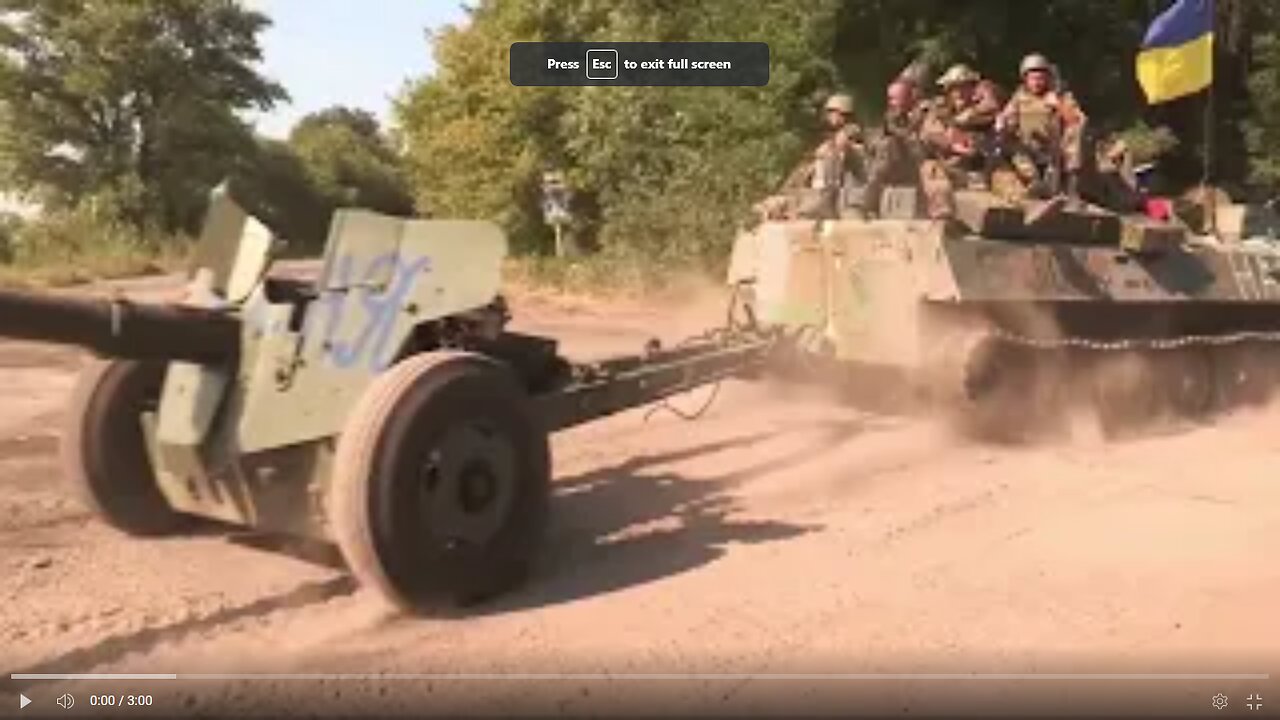Premium Only Content

SouthFront: Cluster Bombs For Ukraine More Threat Than Benefit - NATO War Combat Footage 2023 Today
SouthFront: Cluster Bombs For Ukraine: More Threat Than Benefit - NATO War Combat Footage 2023 Today
14.07.2023
On July 7, Washington announced its decision to supply the Ukrainian military with cluster munitions, which was explained as a temporary measure taken until Kiev and its patrons could increase the production of conventional artillery ammunition.
Cluster munitions are extremely dangerous for civilians, because they sometimes they do not detonate for a long time and cause heavy damage in populated areas. Washington confirmed the high risks for the Ukrainian people, but still pushed the dangerous ammunition to Kiev under the guise of assistance.
Amid Washington’s staged concern for the Ukrainians, it turned out that cluster munitions were already deployed on the frontlines.
Just a few days later, a Ukrainian general confirmed that Ukraine had received, but had not yet used this ammunition in combat. The Pentagon had no choice but to confirm the information but it attempted to justify its decision, which was not supported by many of its Western partners. The US military revealed that Ukraine has also received cluster munitions from at least one other country.
Indeed, the Ukrainian military has been actively using cluster munitions since the beginning of the anti-terrorist operation against the population of Donbass in 2014.
At that time, Kiev began using stocks of Soviet era cluster munitions. One of the most common types is the 9M27K cluster rocket shell for the “Hurricane” MLRS.
After Russia entered the conflict in 2022, the Ukrainian military was spotted using Israeli-made 120 mm M971 mortar munitions, as well as German-made SMArt 155 mm cluster rounds and NATO BONUS 155 mm artillery cluster rounds made by Sweden and France.
In its turn, Washington promised to supply Kiev with M483A1 and M864 cluster shells for the 155 mm guns. These are ballistic projectiles that have no guidance systems. Their low accuracy is compensated for by a large area of damage. However, the range of strikes with such ammunition is also significantly low, less than 30 kilometers.
It should not be excluded that the Ukrainian military may also receive M26A1 missiles for the HIMARS and Mars II MLRS. Their launch range is also significantly low. In order to launch strikes with cluster munitions, the Ukrainian military will have to relocate installations closer to the front, which increases the risk of loss.
Cluster munitions are not effective enough during offensive operations. They were designed to limit the maneuver of large enemy forces, defeat clusters of uncovered infantry and equipment, field depots etc; but not to destroy enemy defensive fortifications.
This means that Kiev and NATO are likely concerned about Russia’s counter attacks. In their turn, the Russians currently claim that they now have their hands free to use cluster munitions as well.
-
 57:22
57:22
barstoolsports
17 hours agoHardest Puzzle Breaks Brains | Surviving Barstool S4 Ep. 8
247K12 -
 9:02:15
9:02:15
Dr Disrespect
21 hours ago🔴LIVE - DR DISRESPECT - MARVEL RIVALS - RANKED
383K65 -
 1:00:46
1:00:46
The StoneZONE with Roger Stone
12 hours agoFake News Attack on Tulsi Gabbard! | The StoneZONE w/ Roger Stone
71.2K24 -
 2:24:08
2:24:08
WeAreChange
15 hours agoElon Musk & Donald Trump: The Emergency Halt That Saved Us
94.9K63 -
 1:13:11
1:13:11
Flyover Conservatives
1 day agoWARNING! Is Bitcoin CIA-Controlled? – The Shocking Reality of Digital Assets - Clay Clark | FOC Show
45.3K12 -
 2:00:37
2:00:37
Space Ice
18 hours agoSpace Ice & Redeye Try To Figure Out Seagal's Most Incoherent Movie
169K7 -
 1:00:36
1:00:36
PMG
1 day ago $15.50 earned"Santa Trump is Giving Us Hope - But Will Johnson Stand Strong?"
122K17 -
 54:30
54:30
LFA TV
1 day agoThe German Strongman’s Arrival Is Imminent | Trumpet Daily 12.18.24 7PM EST
89.3K8 -
 2:04:11
2:04:11
Melonie Mac
16 hours agoGo Boom Live Ep 32! Soul Reaver Remastered!
73.7K11 -
 39:11
39:11
Sarah Westall
13 hours agoDigital Slavery and Playing with Fire: Money, Banking, and the Federal Reserve w/ Tom DiLorenzo
89.3K8